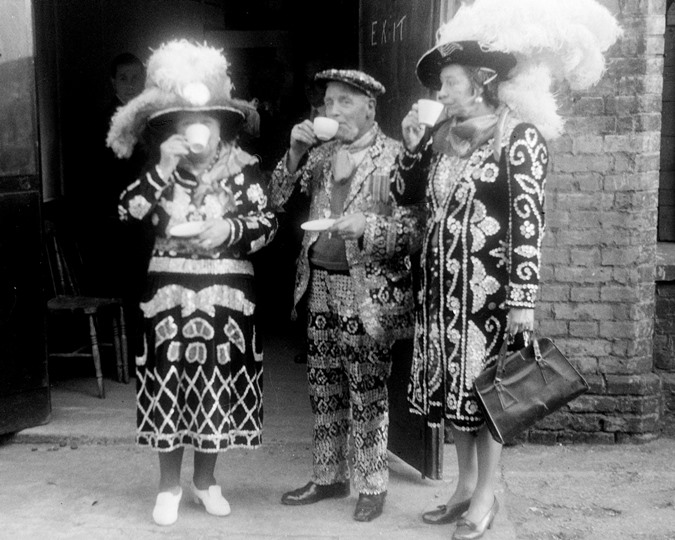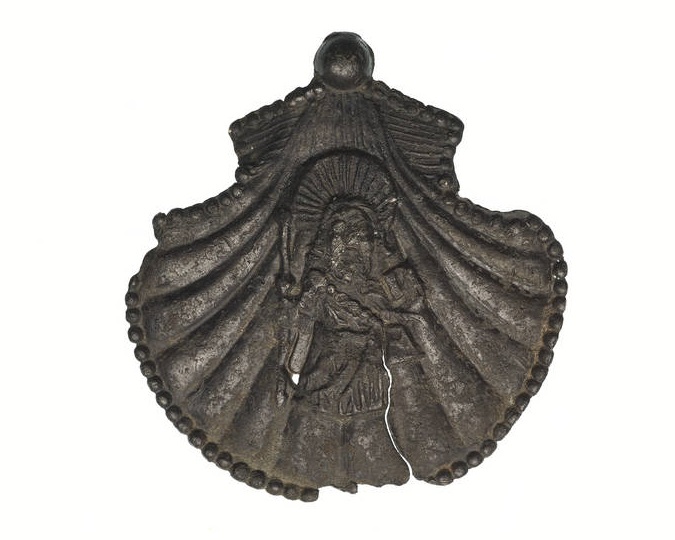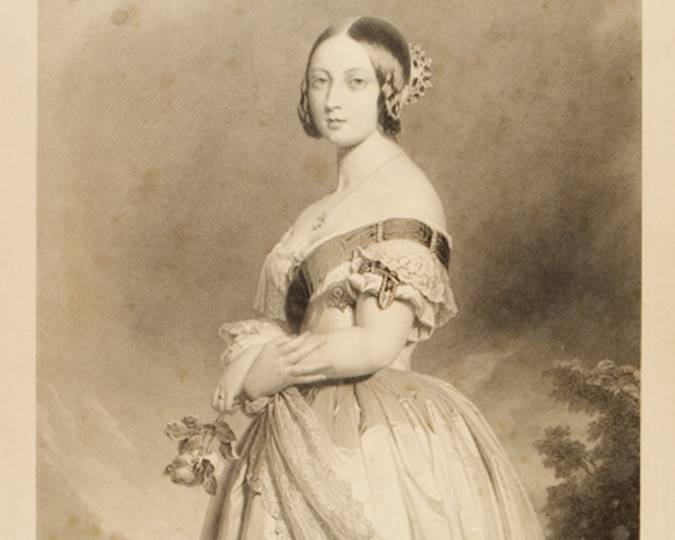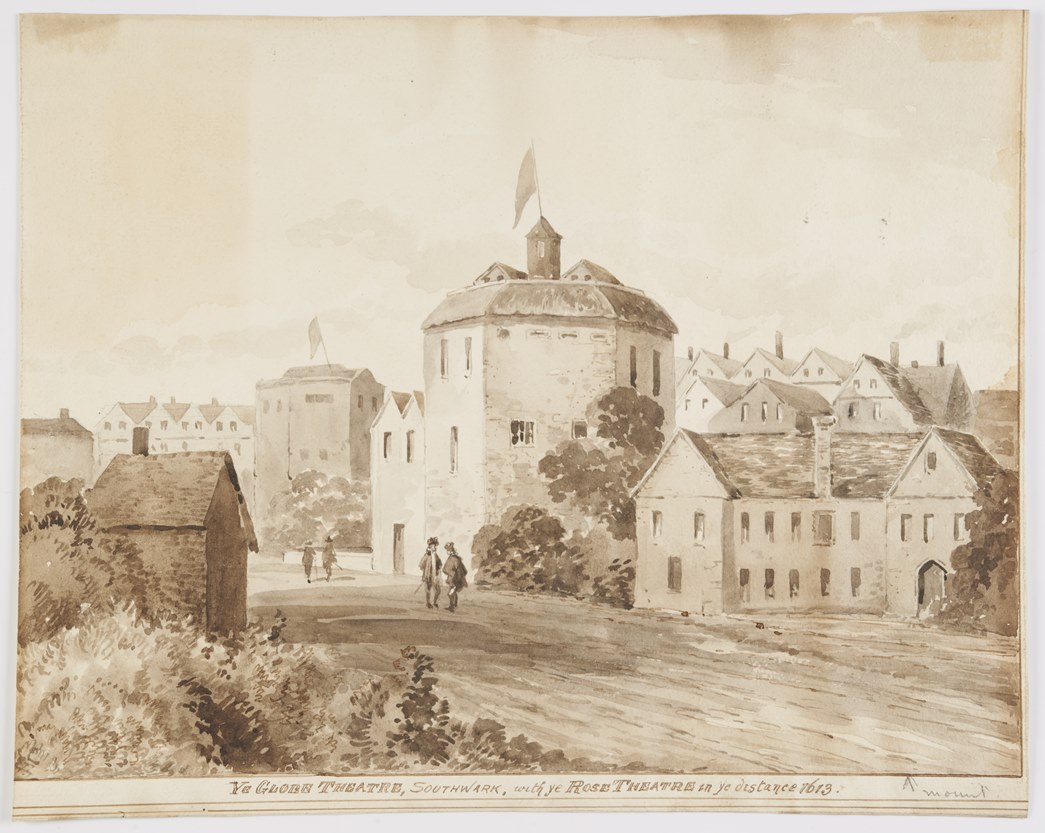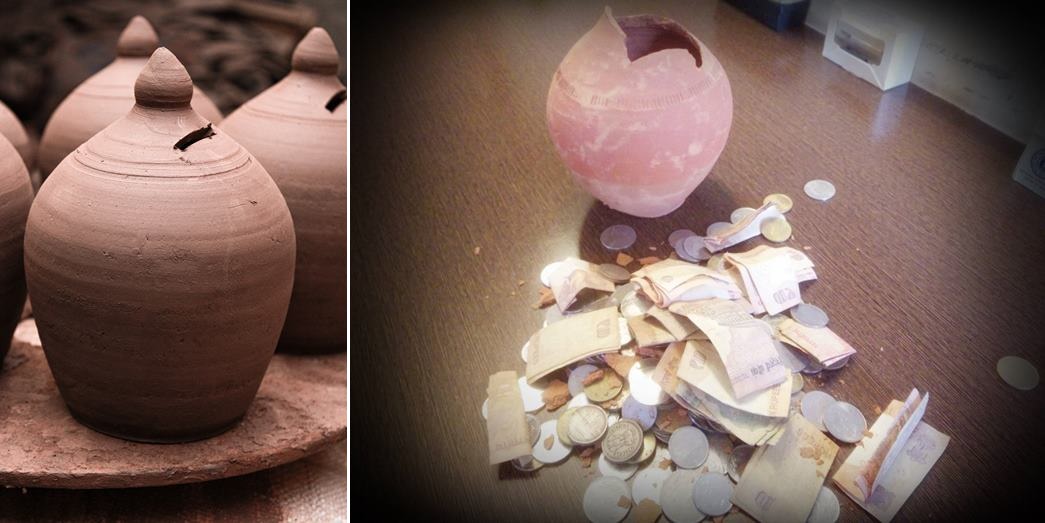Tudor and Stuart money pots/boxes have an unusual shape and would have been single use. With fragments commonly found by mudlarks, we wonder how people used these earthen pots. And did they really inspire the origins of the term ‘box office’? We find out.

Knops of money pots that were found during the excavation of the Rose Theatre.
A common find for London mudlarks on the Southbank of the river Thames are small, ceramic, green-glazed earthen knops. These little hat-like tops that were once a part of a Tudor money pot have an interesting connection with Shakespeare’s world, and one that spans across the seas to the Indian subcontinent.
While similar green-glazed pottery is found along the whole stretch of the Thames, these knops seem to be a lot more in the vicinity of Bankside. They are likely to be remnants of the landscape of theatres that once occupied this stretch of the river. The Museum of London holds a large collection of close to 200 money boxes/pots. One with coins still inside.
How did people use these money pots?
These complete examples show that these money boxes had large rounded bodies, and a slit on one side for coins to be inserted, but no hole for taking the money out. Meaning, the only way to easily retrieve the coins would be to smash the pot. One could insert a narrow blade into the slot to pry the money out, but that would have been time-intensive.
These pots are made out of a type of ceramic called Surrey-Hampshire Border Ware, the place of manufacture. This pottery production area near Farnham became the main production place for London’s utilitarian pottery in the 16th and 17th centuries. This type of pottery was likely to have been mass produced and relatively cheap. However, the production of these handcrafted vessels would have still taken time and skill, and it seems strange that these money pots were produced for single use.
So, why not use a ‘regular’ box?
The answer to this may lie in these knops’ find-spots. A large collection of 162 money-box fragments were recovered from excavations at the Rose Playhouse. The Rose was excavated ahead of building work in 1989. Having thwarted threats of destruction, the preserved remains can still be viewed today. The Rose opened in 1587 and was the first theatre to be constructed on London’s Bankside. It was host to plays by legends such as William Shakespeare and Christopher Marlowe.
The discovery of such a large quantity of money box fragments from these excavations has led some archaeologist to believe these money boxes were used to collect earnings from ticket sales in Elizabethan theatres.Where did the term ‘box office’ come from?
One theory is that the term ‘box office’ originated from these money boxes, but we know that the term came into popular use over a hundred years later in 1786, so this seems unlikely. It’s more probable that the ‘box-office’ came from the expensive ‘box seats’ sold at theatres, rather than our little money boxes.
Elizabethan theatres were one of the few spaces in London where people of all classes came together. Groundlings paid a penny to stand in the yard in front of the stage. For a tuppence, you could sit on a bench to watch a Shakespeare play, and for another penny could hire a cushion for a bit of added comfort. The richest would often sit in the ‘Lords Room’ at the back of the stage, providing a poor view of the drama, but a good view for the rest of the audience. These seats were useful displays of authority. To put it into context, a penny could buy the Elizabethan Londoner a loaf of bread. Theatres were, therefore, affordable, and one of the reasons that it was such a popular pastime during this period.
Another connected popular term is ‘Boxing Day’. It’s suggested that people in the middle ages also used similar money boxes to store their savings. Curator Meriel Jeater shares, “in medieval times Boxing Day on 26 December was when children and apprentices could smash open their money boxes and spend their savings on Christmas treats.”
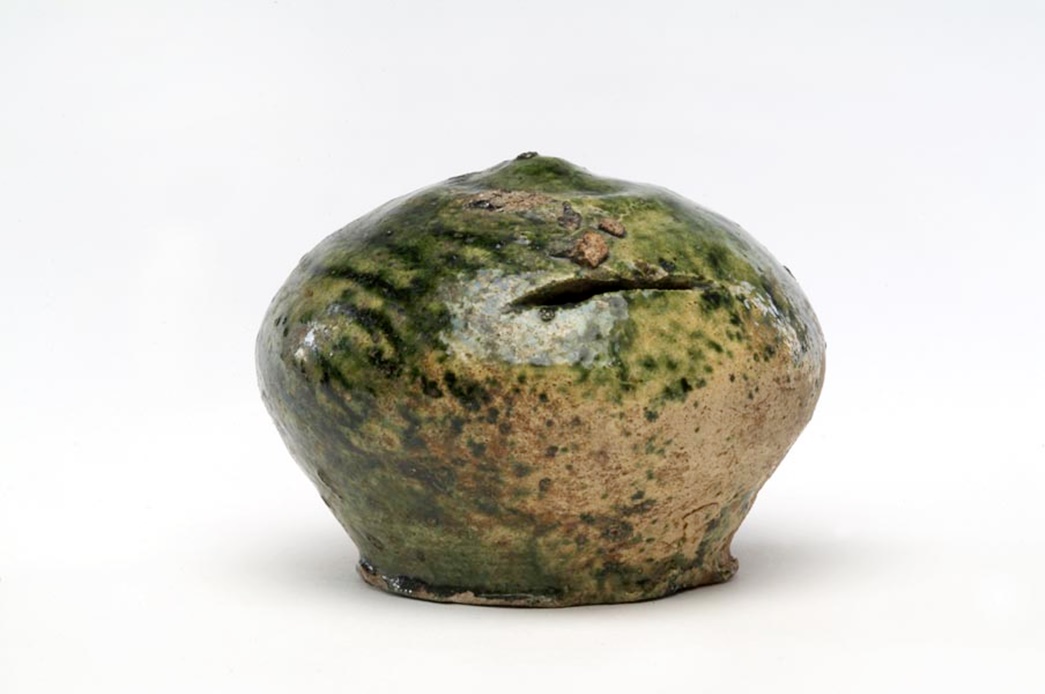
Boxing Day treats
It is unusual to find an unbroken pottery money box such as this one. Children and apprentices would save money and tips in these money boxes, breaking them open on Boxing Day (26 December) to buy themselves Christmas treats. (ID no.: A3855)
How did they use the money boxes?
We know that the ticket money was collected by someone called the ‘gatherer’, but ‘how’ is uncertain. The answer could be in its unusual shape. Perhaps the knops allowed the pot to be tied to a leather string and dangled either from the gatherer’s belt or held up for the crowd to insert their fee.
While this seems possible, the fact that these money pots are completely closed, the cash only retrievable from breaking the pot, would imply a need for security. It is also possible that these pots were not used to collect ticket money, but for snacks sold by vendors in the theatre courtyards. Indeed, excavations of Elizabethan theatres have revealed evidence of small animal bones, nuts and berries being consumed in the auditorium. Here, a vendor’s hands might be full, and, preoccupied with their food preparation and in a crowded space, the money pot would need to be protected.
So, where is the Indian subcontinent connection we alluded to?
The Hindu money pot
As research continues on these medieval wares, another interesting fact is that halfway around the world in India, similar money pots, without the green glaze, have been used for centuries in Hindu households. Associated with the Hindu goddess of wealth, Lakshmi, these bulbous pots are commonly used to save money offered to the gods. On an auspicious day — usually during the extended festival of Diwali — the pot is broken open and the money is used to buy something precious for the house. A new pot is then consecrated for the next year’s collection.
We don't know if the design of these money pots could have travelled between the different continents during 16th and 17th centuries, but it’s worth investigating. For Hindus, the broken pots are also cast into a flowing river, so it would be quite natural for mudlarks to find them as well.
Money pots continue to intrigue archaeologists, and questions remain over their function and production in Shakespeare’s London. A new research project, ‘Making and Breaking of Playhouse Pots’ by Heather Knight of the Museum of London Archaeology, aims to delve deeper into these pots.
Header image: Knops of a number of Tudor money pots found while mudlarking. (©Lara Maiklem)
Love history and trivia? Subscribe to our free History of London newsletter for stories from our collections, displays and exhibitions.

